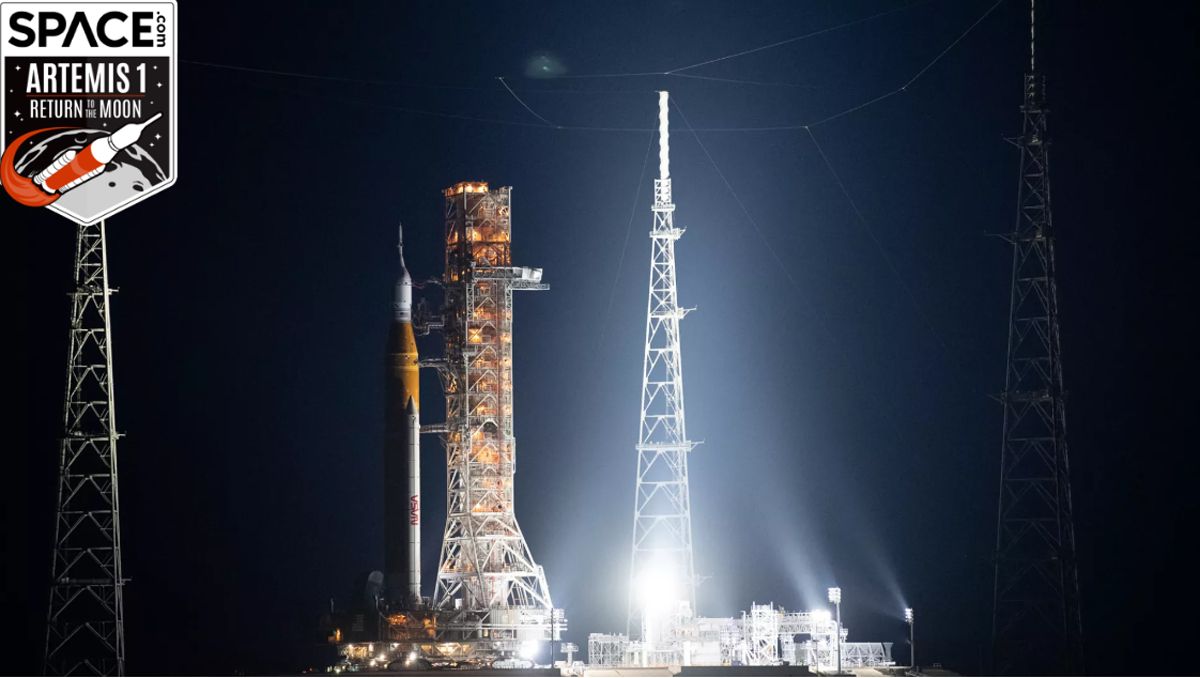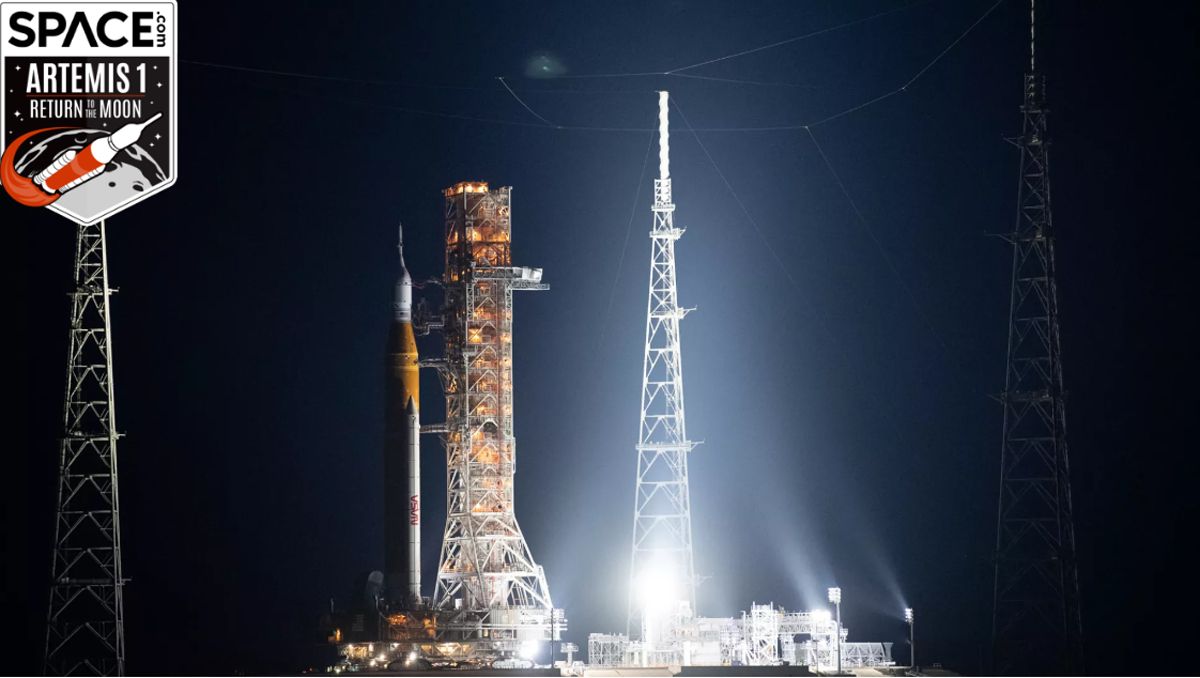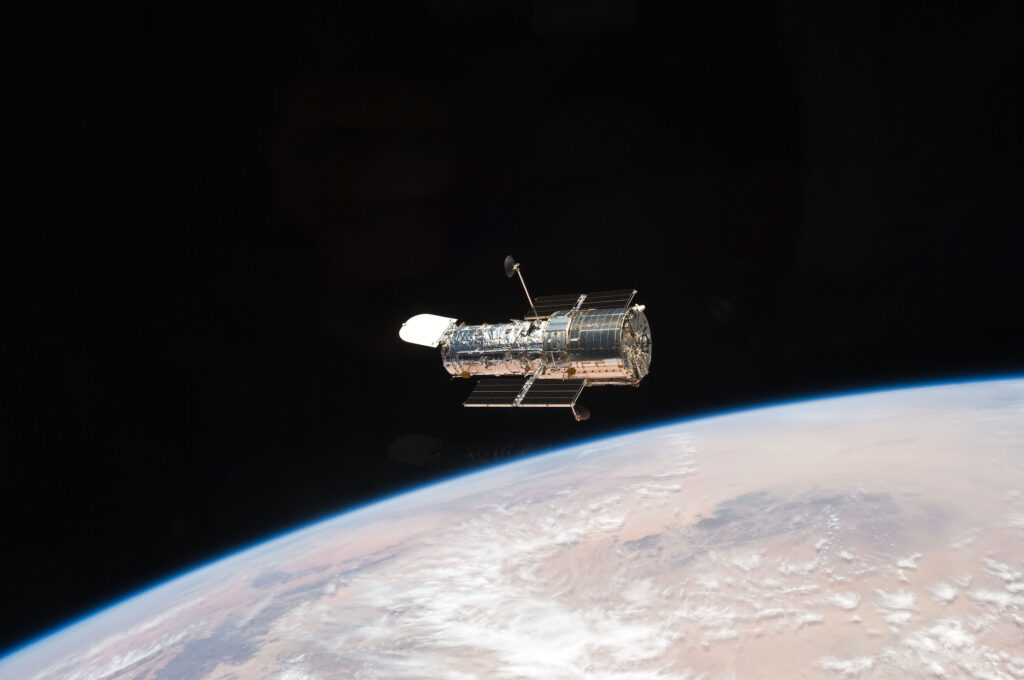
CAPE CANAVERAL, Fla — NASA’s Artemis 1 mission will open a new era of U.S. space exploration when it launches to the moon this month, but exactly when it lifts off depends on several factors.
Artemis 1, the first uncrewed test flight of NASA’s Artemis program to return astronauts to the moon, is currently scheduled to lift off from Pad 39B of the Kennedy Space Center in Cape Canaveral on Wednesday (Nov. 16) Liftoff is currently scheduled for 1:04 p.m. EST (0604 GMT), weather permitting. You can watch the launch live online on Tuesday, Nov. 15, starting at 3:30 p.m. EST (2030 GMT), courtesy of NASA TV.
Related: NASA’s Artemis 1 moon mission: Live updates
Artemis 1 has a 2-hour launch window
NASA has stressed repeatedly that Artemis 1 is, at its core, a test flight. It is the first-ever flight of the agency’s new megarocket, the towering Space Launch System (SLS), as well as the first deep-space flight for the new Orion spacecraft. There may be technical glitches that come up during the launch countdown that warrant a delay.
“The test fight itself carries inherent risk,” Jim Free, NASA associate administrator for exploration systems development, has said. “This is the first flight of a new rocket and a new spacecraft.”
In fact, an engine cooling issue forced NASA to call off an attempted launch on Aug. 29. A Sept. 3 launch attempt was thwarted due to a liquid hydrogen leak during fueling, forcing NASA to ultimately roll the rocket back to its Vehicle Assembly Building for repairs.
NASA has a two-hour window in which to launch Artemis 1 on Nov. 16. That means the launch could occur anytime between 1:04 a.m. and 3:04 a.m. EST (0604-0804 GMT), although NASA is targeting the start of the window.
While NASA always watches the weather ahead of launches, the forecast for Artemis 1’s third launch try is promising. Currently, there is an 80% chance of good weather at launch time, according to an Nov. 12 forecast (opens in new tab) from the Space Launch Delta 45 weather group at Cape Canaveral Space Force Station. The primary concerns are thick clouds, surface electrical fields from lightning and the possibility the SLS may have to fly through rain on its ascent. The weather group will issue daily weather updates through launch. You can find those on the Space Launch Delta 45 website (opens in new tab).
What if Artemis 1 doesn’t launch ontime?
If technical issues or bad weather delay the Artemis 1 mission, NASA does have some options.
Like with its past attempts, Artemis 1 has two backup days in addition to its Nov. 16 launch date: Saturday, Nov. 19 and Friday, Nov. 25. A successful launch on Nov. 16 would send Artemis 1 on a 25-day mission to the moon and back.
If the mission is delayed to Saturday, Nov. 19, launch would occur at 1:45 a.m. EST (0645 GMT) and would also give NASA a two-hour window in which to launch Artemis 1. That mission woud last between 26 and 28 days, according to a NASA chart.
While NASA has not released a time for the Friday, Nov. 25 launch option, that mission is also on the short mission duration list. A launch on Nov. 25 would allow a mission of 26 to 28 days. One thing to note is that Nov. 25 is the day after the U.S. Thanksgiving holiday on Thursday, Nov. 24. If this was NASA’s only option to make the launch window, the agency would likely take it. (It’s James Webb Space Telescope did launch on Christmas day in 2021, after all.)
Originally, NASA attempted to launch the mission on Monday, Aug. 29, at 8:33 a.m. EDT (1233 GMT), with two initial backup launch days: Friday, Sept. 2 and Monday, Sept. 5. After scrubbing that Aug. 29 attempt, NASA ultimately retargeted for Sept. 3, ultimately standing down due to a fuel leak.
What if NASA misses this Artemis 1 launch window?
If NASA is unable to launch the Artemis 1 mission during the Nov. 16 to Nov. 25 period, the agency would have to fall back on a series of additional launch windows that run throughout the rest of the year and early 2023.
In May, the space agency unveiled a calendar of launch opportunities through mid-2023 that met a series of criteria needed for the Artemis 1 mission. That list was updated earlier this month as NASA weighed possible launch options.
Here’s a look at when those additional launch opportunities could occur.
- Nov. 12-Nov. 27, except for Nov. 20-21 and Nov. 26 (preliminary);
- Dec. 9-23, except for Dec. 10, 14, 18 and 23 (preliminary).
- Jan. 7-20, except for Jan. 10, 12, 13 and 14;
- Feb. 3-17, except for Feb. 10.
You can download NASA’s full Artemis 1 launch availability calendar (opens in new tab) (PDF) to see how the dates stack up.
How does NASA pick Artemis 1 launch dates?
NASA has four primary requirements that drive how it selects launch dates for Artemis 1. Here’s what they are, according to a NASA data sheet (opens in new tab).
- The moon’s position in its orbit: The moon’s location dictates the launch day because NASA wants to place Artemis 1 in what’s called a “distant retrograde orbit” around the moon. To do that, the SLS current upper stage has to perform a maneuver called a trans-lunar injection burn at a specific point, with respect to the moon’s position, to put it on the right course.
- Orion’s lighting conditions: NASA mission rules dictate that the Orion spacecraft cannot be in darkness for more than 90 minutes at a time. This is because Orion is solar powered, so it needs sunlight on its arrays, and also to maintain its optimum temperature.
- Orion’s “skip” reentry plan: In order to pinpoint Orion’s splashdown location in the Pacific Ocean, NASA wants to try a “skip” reentry in which the space capsule dips into the Earth’s upper atmosphere, then skips out briefly before making its final reentry. To do that, it has to launch during certain windows to reach the right trajectory upon its return to Earth, NASA says.
- Orion’s splashdown lighting conditions: NASA wants Orion to splash down during the daytime hours to make it easer for recovery teams to spot the capsule and retrieve it out of the ocean.
Related stories:
All of those requirements make for a complicated calculus when it comes to determining a launch date for Artemis 1.
If you’re planning to watch NASA’s Artemis 1 launch online, Space.com will carry the agency’s webcast live but it does run overnight from Tuesday, Nov. 15 to Wednesday Nov. 16. A fueling webcast will begin on Nov. 15 at 3:30 p.m. EST (2030 GMT), with the launch webcast beginning in earnest on Nov. 15 at 10:30 p.m. EST (0330 Nov. 16 GMT).
NASA is also expected to livestream several post-launch events, including a press conference, confirmation of the trans-lunar injection maneuver and the first views of Earth from the Orion spacecraft. You can see a full schedule in our Artemis 1 webcast guide.
Editor’s note: This story was updated on Nov. 13. 1 with NASA’s new launch target dates and times for the Artemis 1 mission after its delays on Aug. 29 and Sept. 3.
Email Tariq Malik at tmalik@space.com or follow him @tariqjmalik. Follow us @Spacedotcom, Facebook and Instagram.



